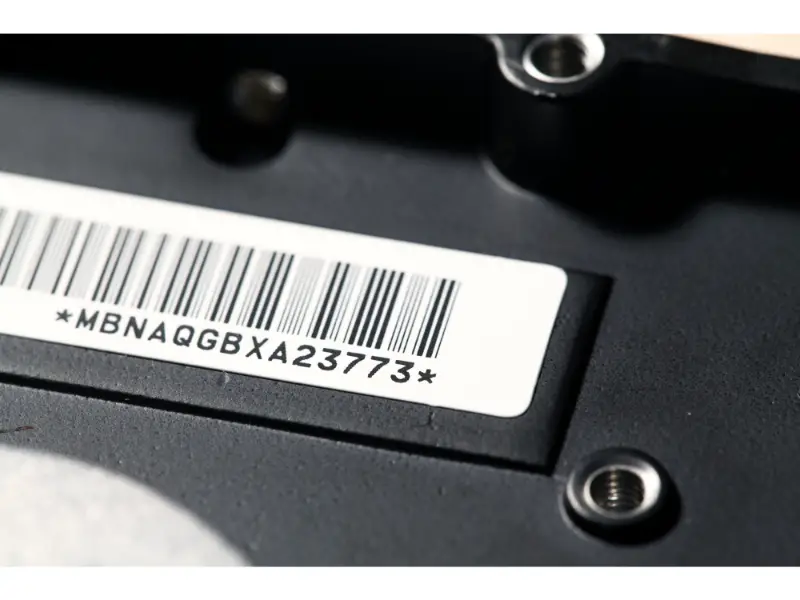Disclaimer: This post may contain affiliate links, meaning we get a small commission if you make a purchase through our links, at no cost to you. For more information, please visit our Disclaimer Page.
Apple devices, such as the iPhone and iPads, are great. They provide an easy-to-use interface with access to apps that can be used on each device that make life easier. Whether you are a developer or a business, it is important to know what IDFV means.
IDFV is an acronym for “Identifier for Vendor.” It’s a unique identifier that’s shared by all apps belonging to a single company. What that means is that the value of IDFV will remain the same on different App Store apps, accessed on the same device, as long as they were published by one developer.
Table of Contents
Is IDFV a device ID?
Yes, IDFV or “Identifier for Vendor ” is a device ID. Before I go further to tell you why IDFV is a device ID, let’s start by understanding exactly what a device ID means.
A device ID is simply a unique, anonymized identifier, which is designed as a mix of numbers and letters. In other words, a device ID is a unique alphanumeric code that’s usually associated with a single mobile device, such as a smartphone or tablet.
Personally Identifiable Information (PII), such as names and emails, is not usually associated with a device ID. The reason for that is because ID is anonymous. Furthermore, a device ID is usually stored on a mobile device. It can only be retrieved by apps that are downloaded and installed.
Importance of device ID
A device ID plays an important role in how businesses run and how users are easily identified. Since a device ID mostly focuses on the specific device of a user, it can be utilized to track individual devices and identify and retrieve necessary information, such as a user’s behavior.
Furthermore, by successfully tracking a user’s device ID, you can easily understand how the user interacts as well as how they behave. Information acquired can always serve various purposes for different people, such as vendors and advertisers.
Types of device ID
Advertising identifiers (IFA)
There are a few different types of device IDs. The first type is known as advertising identifiers (IFA) and it’s available in two types; the Google Advertiser ID (GAID) and ID for Advertisers (IDFA). The former is the advertising identifiers utilized by Android, while the latter is used by Apple.
Both GAID and IDFA work in the same way. They do that by helping to connect how a user interacts with an ad campaign. The advertising identifiers enable advertisers to track user ad activities anonymously.
Vendor identifiers (IFV)
A vendor identifier is another type of device ID. A vendor ID is an alphanumeric code that is assigned to each piece of mobile device hardware.
An Identifier for Vendors, also called IDFV, is a good example of a vendor identifier. It’s an alphanumeric code that’s assigned to all applications by one vendor or developer. The code is shared across all apps created by the developer on your device.
According to Apple, IDFV offers the same values as the apps coming from one vendor running on the same device. If the apps are on the same device but from different vendors, different values are achieved.
Also, if the apps are from one vendor but on different devices, IDFV will give different values. As you can see, IDFV needs the apps to be from a single vendor and on a device to be able to deliver the same values. As such, it’s safe to say that IDFV is a vendor device ID.
The bottom line is that Identifier for Vendors or IDFV is a vendor device ID. However, you need to understand that, unlike IDFA, the vendor device identifier is not assigned at the device level. Instead, it’s usually assigned to all apps by a single vendor.
What exactly is IDFV?
As you already know, IDFV is an abbreviation that’s used for Identifier for Vendors. It’s an alphanumeric code that’s assigned and shared by all applications from the same vendor.
As earlier mentioned, Identifier for Vendors is a unique alphanumeric string that helps to identify a device to the app’s vendor. IDFV has the same values as the applications coming from the same vendor, which is running on the same device.
As for apps on the same device that come from a different vendor, a different value is given. The same thing also goes for apps on different devices, regardless of whether or not they are from the same vendor.
One of the benefits of Identifier for Vendors or IDFV, as pointed out here, is that it allows vendors to run cross-promotional iOS campaigns, including Limit ad tracking (LAT), a feature that provides users with the option to stop having an ID for Advertisers.
Yes, app owners can always use the Identifier for Vendors in place of the ID for Advertisers (IDFA). This is especially true if IDFA is not available – in this case, IDFV can be utilized to power some functionality for ad purposes.
Benefits of IDFV for advertising purposes
As you already know, you can always use IDFV in place of an identifier for Advertisers to power some ad serving. Well, you need to understand that there are basically two ways IDFV can be utilized.
One of the use cases for IDFV is frequency capping – this is an advertising term, and it means restricting the number of times a specific visitor gets to see a particular ad. With IDFV, the value achieved can be utilized to track the number of times a user has seen a particular ad.
Although frequency capping is best achieved with IDFA, using IDFV can also work in cases when ID for Advertiser is not available. In this case, all the user needs to do is share the IDFV value with the appropriate person for frequency capping.
Apart from frequency capping, another benefit of using IDFV is that it can also work in the case of audience targeting – this is an advertising process that involves tracking and understanding your audiences’ behavior. This process makes it easy to separate consumers into various segments, based on their demographic information or interest.
By using an Identifier for Vendors, you can always take advantage of the value achieved to create first-party data sets, based on how a user interacts with a particular app, as explained by Ad Tech Explained.
The bottom line is that an Identifier for Vendors, which is unique to a particular iOS device, is an alphanumeric string that’s assigned to all apps by a single vendor.
Although it’s not the same as Identifier for Advertisers, it can be utilized in a couple of cases to power as serving functionality. For instance, you can always use an IDFV value for frequency capping and audience targeting.
How do I get IDFV on iOS?
You can get your Identifier for Vendors on iOS using a couple of methods. One of the simplest ways to locate your iOS device’s IDFV is by using a third-party app, known as Upsight SDK.
First, you need to integrate your app with the Upsight SDK. After that, all you need is to use a console log following the simple steps below.
- You need to connect your device to your system using a USB cable.
- After that, you need to check the iOS console log on your computer – here’s a guide on how to do just that.
- Next, open your already integrated application. Next, type and enter ids.idfa in the console log to get your IDFV.
References
- https://www.singular.net/blog/google-advertising-id-gaid/ – Singular
- https://www.appsflyer.com/glossary/idfa/ – App Flyer
- https://developer.apple.com/documentation/uikit/uidevice/1620059-identifierforvendor – Apple Developer
- https://www.adjust.com/glossary/idfv/ – Adjust
- https://support.google.com/google-ads/answer/117579 – Google Support
- https://adtechexplained.com/idfv-explained/ – Ad Tech Explained
- https://help.upsight.com/api_sdk_reference/ios/#checking-console-logs – Upsight


